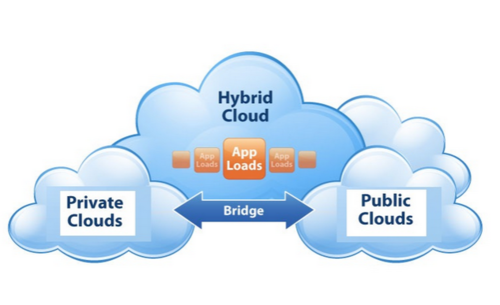Many believe that it is the final state in which most companies operate: some infrastructure resources in the facilities, others in the public cloud. Others believe that it is a term that has been confused by various definitions of a variety of suppliers, which diminishes the term so that it is now vague and nebulous. So, what does the hybrid cloud really mean and how can users implement it?
While there is no single agreed definition of hybrid cloud computing, perhaps the closest we have is to the National Institutes of Standards in Technology (NIST): the infrastructure in the cloud (hybrid) is a composition of two or more infrastructures in the cloud different (private, community or public) that remain unique entities, but are united by standardized or proprietary technology that allows the portability of data and applications.
What does that mean in simple terms? Basically, most people believe that hybrid cloud computing means managing a public and a private cloud as one, or at least having management tools in both environments. However, there are many types of hybrid cloud. Clearly definition and more about this topic you will find on aviatrix.
Hybrid Architectures in the Cloud
If you have more than one cloud environment (public and private, multi public), then it may be useful to have a management platform that covers these environments. Managing these environments separately can create unnecessary duplication of potential security risks and efforts.
There are multiple approaches to the architecture of a hybrid cloud:
Hybrid cloud management software: A plethora of new companies and established infrastructure management providers have developed software that allows users to centrally manage both infrastructure and applications in the public and local cloud. In a single console, virtual machines, storage, databases and other resources can be rotated up and down, regardless of whether they are in a company data center or in the public cloud.
Native Vendor Hybrid Cloud
Another way to think about the architecture of a hybrid cloud is to extend the local footprint to the public cloud or vice versa, and connect the resources of the public cloud with a data center. In recent years, all vendors in the popular infrastructure as a service (IaaS) cloud have made this easier to do.
PaaS
Many organizations use a platform as a service (PaaS), an application development platform for developers to write custom applications without providing the underlying infrastructure they need to function. Examples of PaaS include Pivotal Cloud Foundry, Red Hat OpenShift, IBM Bluemix and Apprenda. Most of the main PaaS software can be run on the client’s premises, hosted in a private environment or natively on the large IaaS public cloud. PaaS automatically configures the infrastructure resources in these environments, making them a platform for the hybrid cloud.

